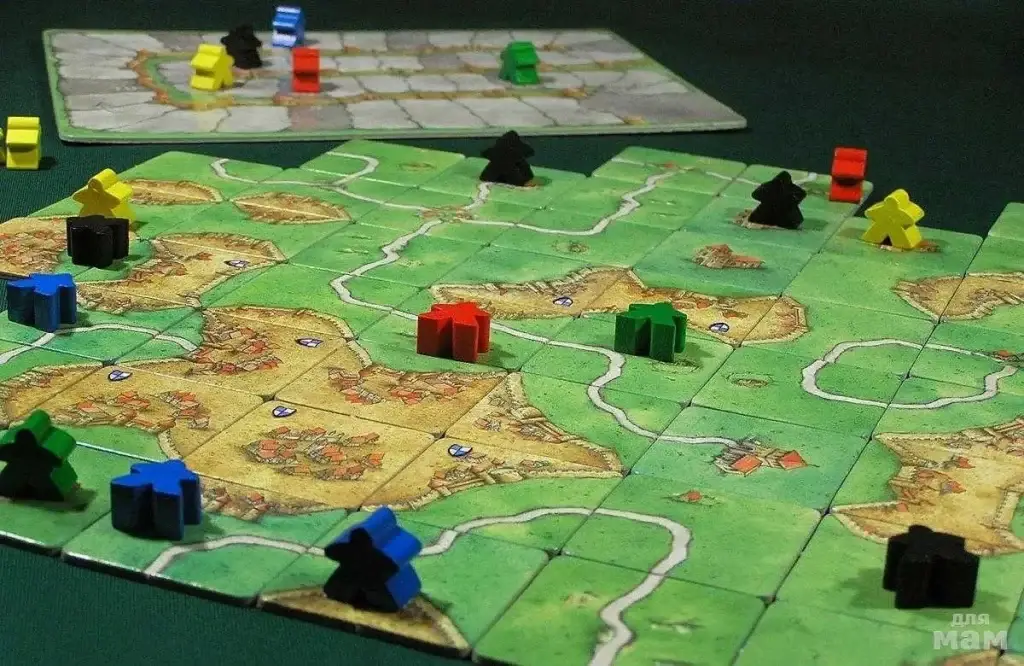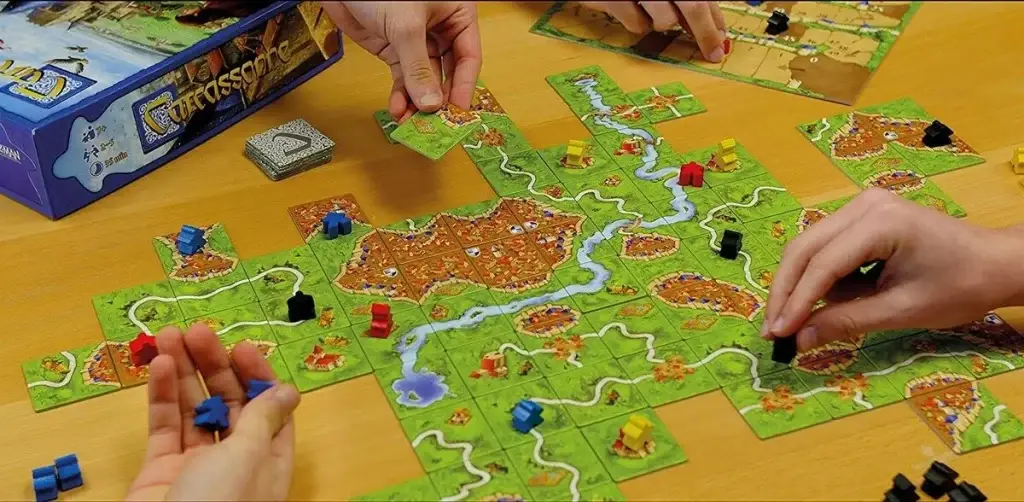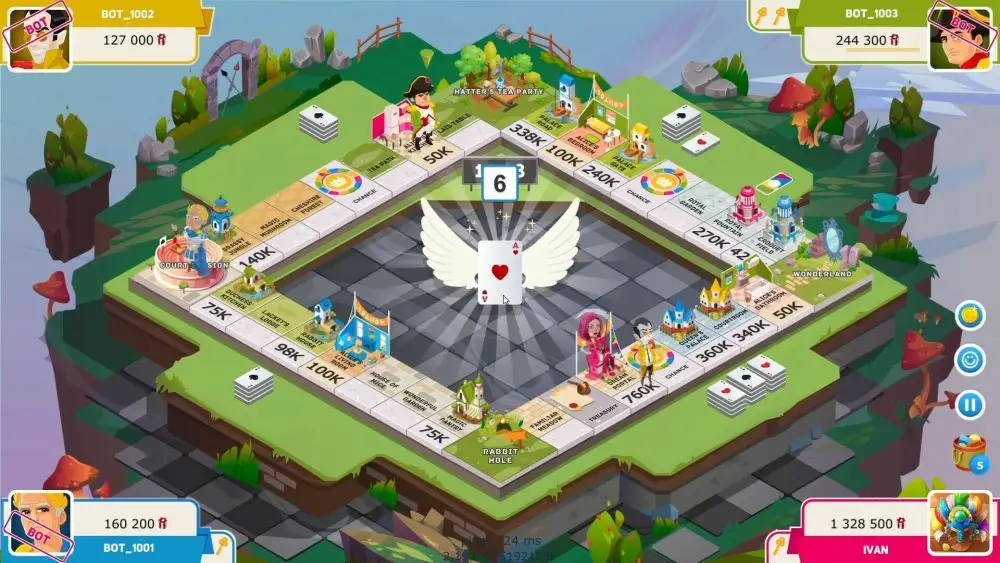The Middle Ages are often associated with knights, castles and dark chronicles, but the Carcassonne game turns this time into an exciting strategy. No boring chronology – here awaits a world in which each participant becomes part of a complex process of building a medieval city. The popularity of the project arose due to an amazing combination of simplicity and deep strategic opportunities.
Why play Carcassonne: immersing ourselves in the magic of medieval construction
In the Carcassonne game, every small tile – be it a road, a monastery or a castle – comes to life right before your eyes, turning into a fascinating mosaic of knightly estates and developed territories. This feeling of freedom, when each move changes the map, any decision affects the entire layout. Unlike complex board games with dozens of chips and rules, the Carcassonne game allows you to feel medieval construction literally at your fingertips. Here, every tile played is like a contribution to a huge and beautiful project.

Fans return to the story again and again because no two games are the same. Each time the board looks different, each time the strategy changes, and users literally write their own story.
Carcassonne: the story of the legendary board game
The board game Carcassonne was born in 2000 thanks to the German designer Klaus-Jürgen Wrede. The story began with the idea to convey the spirit of an old town in the south of France – Carcassonne. The city, surrounded by ancient walls, inspired Wrede to create a concept that became one of the most successful strategies in the world. The goal was to combine history and tactics, allowing participants to build their own versions of medieval settlements.
The scenario was originally conceived as an easy way to introduce people to the concept of construction. The playing field is not fixed in advance, it is created by the participants during the game – this was a real innovation in the board game market. This mechanic became the hallmark of Carcassonne and made an invaluable contribution to the popularity of the game.
It is interesting that the first editions had slightly different rules and design. However, thanks to player feedback and the development of the board game market, the product quickly evolved, new expansions and improvements appeared, which made the session even deeper and more diverse. Today, there are more than ten official additions, including “Merchants and Builders” and “The Princess and the Dragon”, which allow you to vary the style of play and add new characters and interaction mechanics.
Carcassonne Rules: Everything You Need to Know
 The rules here seem complicated only at first glance, but in fact they are easy to master, especially if you break them down into simple steps. Here, each participant starts with an empty board and several tiles – cardboard squares depicting parts of the city, roads, monasteries and fields. Each turn, the player draws a new tile and places it on the table, attaching it to the existing elements.
The rules here seem complicated only at first glance, but in fact they are easy to master, especially if you break them down into simple steps. Here, each participant starts with an empty board and several tiles – cardboard squares depicting parts of the city, roads, monasteries and fields. Each turn, the player draws a new tile and places it on the table, attaching it to the existing elements.
To make the process easier, here are the basic steps to remember:
- Set up the game: Each player gets seven meeples, which are little people who will represent their influence on the map.
- Play a tile: A player takes one tile and attaches it to an existing board. It is important to follow the rules of connection: a road must continue with a road, a city with a city.
- Place a meeple: After placing a tile, a player can place one meeple on a new area – a road, a city or a board – to claim points.
- Scoring: Once a road or a city is completed, the player scores points and takes the meeple back. Boards are scored at the end of the process.
The mechanics allow for many options for placing tiles, and each time, players are faced with a choice: to continue their territory or to interfere with the opponent. This makes each game unique and unpredictable.
How to Play Carcassonne: Game Strategy and Tips for Winning
To win, it’s important not only to place tiles, but also to think through a strategy several steps ahead. There are both basic and advanced tactics, both of which will help you succeed. Here are some strategic tips:
- Early expansion: In the early stages, it’s useful to actively expand your territories, without being afraid to invest meeples in roads and cities. This will help you score points quickly and provide a base for subsequent moves.
- Using monasteries is a great way to score a lot of points if you successfully surround them with other tiles. Place them in the center of open spaces to make them easier to surround.
- Control over fields: Fields are worth a lot of points at the end of the game, especially if you control a lot of completed cities. Put a meeple on the field early on to ensure a steady flow of points.
- Blocking opponents: Use your tiles not only to improve your own position, but also to block the opponents’ opportunities.
The application of these strategies depends on the specific situation on the board. It is important to constantly monitor what your opponents are doing and adjust your actions depending on their tactics.
Carcassonne: a strategy game for everyone
Carcassonne is an amazing example of a board game that is suitable for everyone, regardless of age and experience. Thanks to the simplicity of the rules and deep strategic potential, the board game remains a favorite among both beginners and experienced players.

The concept helps develop skills such as planning, logical thinking and the ability to anticipate the actions of opponents. The special feature is flexibility – you can play both relaxed, simply laying out tiles, and immerse yourself in complex strategic combinations, trying to block the moves of opponents and score maximum points. This makes the game interesting for different types of participants: from children who are learning to build their first roads and cities, to adults who enjoy immersing themselves in a deep strategic process. The ability to change the rules and add extensions allows everyone to find their ideal version.
Conclusion
 Try playing Carcassonne: feel the atmosphere of medieval construction, become part of the exciting process and find your way to victory. This game is not only entertaining, but also develops skills that are useful in everyday life – planning, tactical thinking and the ability to find solutions even in the most difficult situations.
Try playing Carcassonne: feel the atmosphere of medieval construction, become part of the exciting process and find your way to victory. This game is not only entertaining, but also develops skills that are useful in everyday life – planning, tactical thinking and the ability to find solutions even in the most difficult situations.
 en
en  ru
ru  de
de  ar
ar  es
es  nl
nl  hi
hi  fr
fr  it
it  pt
pt  el
el 











